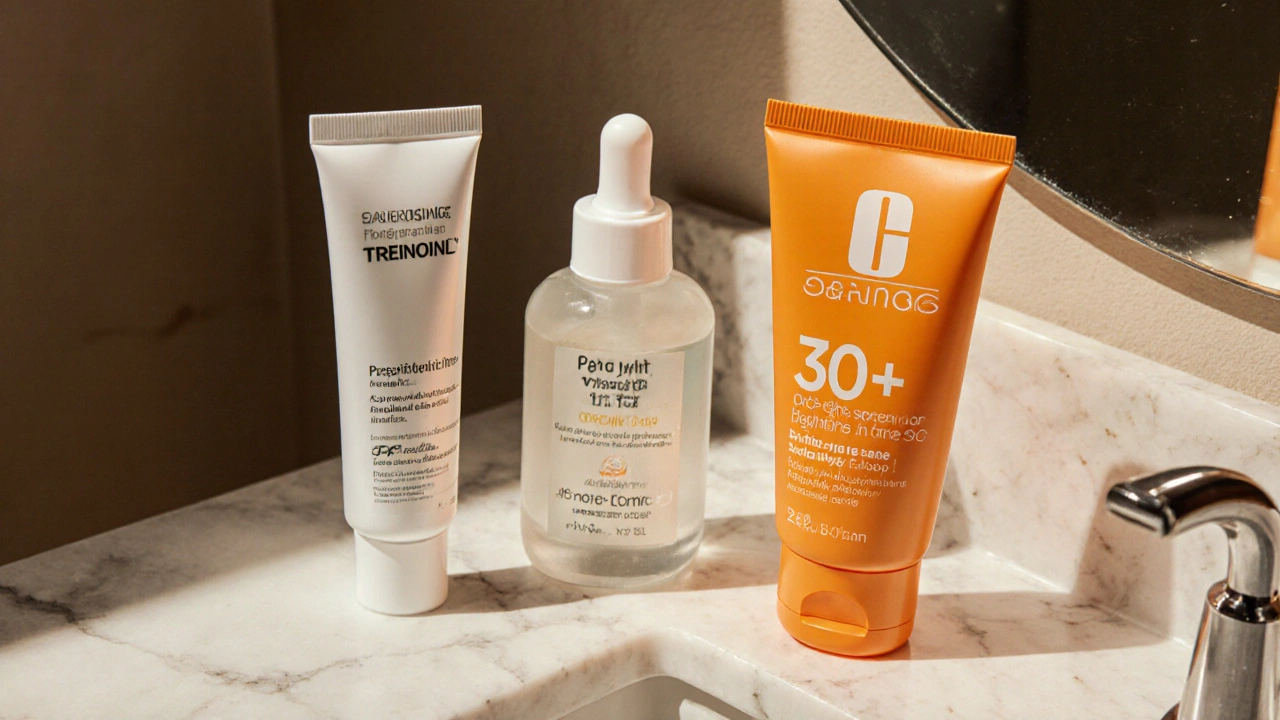Laser Resurfacing
When you hear Laser Resurfacing, a non‑invasive skin treatment that uses targeted light energy to remove damaged layers and stimulate fresh collagen growth. Also known as laser skin resurfacing, it offers a quick way to smooth texture, fade scars, and tighten pores. Chemical Peel uses acids to exfoliate the outer skin and promote regeneration works on a similar principle of controlled injury but relies on chemicals instead of light. Microneedling creates micro‑channels with fine needles to boost collagen production is often paired with laser work to enhance results. Finally, Photorejuvenation delivers broad‑spectrum light to improve tone and reduce redness complements laser resurfacing by targeting vascular issues. Together, these methods form a toolbox for modern skin rejuvenation.
Laser Resurfacing encompasses both ablative and non‑ablative approaches, meaning it can either vaporize the top skin layer or heat deeper tissue without breaking the surface. The choice of wavelength, pulse duration, and energy level determines which skin concerns are addressed—wrinkles, pigmentation, or acne scars. Because the procedure triggers the body’s natural repair cascade, it requires precise control to avoid overtreatment. This is why experienced dermatologists or certified aesthetic practitioners are essential: they match the device settings to your skin type, ensuring safety and optimal outcomes.
Choosing the right adjunct treatment depends on your goals. If you need rapid turnover of dead cells, a chemical peel may be scheduled a few weeks before or after the laser session. For those with deeper textural issues, microneedling can fill in the gaps left by the laser’s surface work, delivering a smoother finish. Photorejuvenation shines when redness or sun damage dominates the concern, as it targets blood vessels without affecting pigment. Understanding how each technique influences collagen synthesis helps you build a customized plan that maximizes results while minimizing downtime.
Practical Considerations Before Your Session
Before stepping into the clinic, you’ll want to know a few basics. Skin type classification (Fitzpatrick scale) guides the laser’s energy level—darker skin needs gentler settings to prevent hyperpigmentation. Pre‑treatment skincare, like avoiding retinoids or exfoliating acids for a week, reduces sensitivity. Also, disclose any medication that makes you light‑sensitive, such as isotretinoin or antibiotics. These steps set the stage for a smoother healing process and lower the risk of complications.
During the appointment, the practitioner will cleanse the area, apply a topical anesthetic if needed, and then deliver the laser pulses. You’ll feel a quick snapping sensation, similar to a rubber band on the skin. The procedure typically lasts 15‑30 minutes depending on the area treated. Afterward, a cooling gel or serum is applied to soothe inflammation and support the skin’s recovery.
Recovery varies by laser type. Ablative lasers may require a week of crusting and redness, while non‑ablative options often show only mild pinkness that fades within a few days. Most patients resume light makeup within 48 hours, but intense sun exposure should be avoided for at least two weeks. Using a broad‑spectrum sunscreen (SPF 30+) daily is non‑negotiable—it protects the new collagen and prevents pigment rebound.
Long‑term maintenance involves periodic touch‑ups, typically every 6‑12 months, to sustain the collagen boost. Complementary treatments like gentle chemical peels or microneedling sessions can be slotted in between laser appointments to keep the skin turnover active. Consistent hydration, antioxidant‑rich serums, and a balanced diet also play a quiet but vital role in preserving the results.
When you compare laser resurfacing to other resurfacing methods, the main advantage is precision. The laser can target specific depths, sparing surrounding tissue, which translates to quicker recovery and more predictable outcomes. However, it does come with a higher price tag than at‑home exfoliants or basic peels. Weighing cost against benefit is part of the decision‑making process, especially if you’re planning multiple treatment cycles.
In short, laser resurfacing sits at the center of a modern skin‑rejuvenation ecosystem that includes chemical peels, microneedling, and photorejuvenation. Understanding how each technique works, what preparation they need, and how they fit together lets you choose the right path for smoother, younger‑looking skin. Below you’ll find a curated selection of articles that dive deeper into these topics, offer expert tips, and answer common questions about safety, cost, and aftercare.
Effective Solutions for Wrinkles: What Really Works?
Discover which wrinkle solutions truly work-from retinoids and Botox to laser resurfacing-plus a step‑by‑step plan, comparison table, and myths busted.

